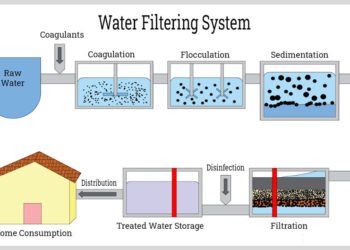Plumbing professionals use various techniques and tools to diagnose internal or external plumbing issues for repairs or replacement. By isolating different sections of the plumbing system, these experts narrow down the location of the issue. Here are some ways plumbers troubleshoot internal or external plumbing issues within your home:
Visual Inspection
Plumbing experts examine pipes, joints, fixtures, and connections for signs of leakage. This includes looking for water stains, dampness, puddles, or discoloration on walls, floors, ceilings, or around plumbing fixtures. They also inspect metal pipes for corrosion, as rust weakens pipes and causes significant leaks.
Plumbing professionals inspect areas with visible pipe connections, such as under sinks or behind toilets, to determine if they are properly sealed and connected. Loose or deteriorated connections can lead to leaks or water damage. They can also check pipes, fittings, and fixtures for physical damage, such as cracks, fractures, dents, or bends.
Water Flow Testing
To assess the flow of water, plumbers turn on faucets, showers, and other fixtures throughout your residence. They observe the speed and consistency of the water flow, noting any irregularities or fluctuations. Plumbing specialists may use flow testing devices or pressure gauges to measure water flow rates at various fixtures.
These experts test the drainage of sinks, tubs, showers, and floor drains by allowing water to flow freely and observing how quickly it drains away. Slow drainage or backups may indicate a clog or obstruction in the pipes that requires cleaning. For toilets, plumbing professionals check for proper water levels in the toilet bowl and listen for unusual sounds during flushing, which often indicates a blockage or malfunction.
Pressure Testing
Pressure testing helps identify leaks or weaknesses in plumbing systems. Before conducting the pressure test, plumbing specialists shut off the main water supply valve to the property to isolate the plumbing system. They attach a pressure testing gauge or pump to the plumbing system’s access point and introduce air or water into the system.
Plumbers observe the pressure gauge during the testing period for abrupt or steady drops in pressure. A sudden pressure drop indicates a significant leak, while a gradual decline may suggest smaller leaks or weaknesses in the system. After analyzing test results, plumbing experts can develop a plan for repairs or remediation.
Video Inspection
Video inspection is a diagnostic technique that plumbing professionals use to check the interior of pipes and sewer lines visually. This plumbing method is non-destructive, meaning it does not require excavation or invasive procedures, minimizing disruption to your home. During the inspection, plumbing experts insert the camera into the pipe or sewer line, guiding it through the system using the flexible cable. The camera features bright LED lights to illuminate the interior of the pipe for visibility in dark or confined spaces.
Plumbing professionals examine the condition of the pipes, looking for signs of damage, corrosion, leaks, tree root intrusion, or blockages. They also identify structural defects, such as cracks, fractures, or collapsed sections of the pipe. Taking screenshots and recording footage allows them to analyze the findings and recommend pipelining. Using trenchless technologies can repair or replace sewer lines without extensive excavation, minimizing disruption to landscaping and property.
Smoke Testing
Smoke testing detects leaks and identifies areas of concern within plumbing systems, such as sewer lines. This technique can identify cracks, fractures, or faulty connections that may be difficult to detect using other methods. Before the process begins, plumbing experts seal openings, traps, and drains to prevent the smoke from escaping through ventilation points. These professionals introduce smoke into the plumbing system through a cleanout or access point using a blower or air compressor.
They observe the exterior of the building and nearby areas, such as yards, basements, or crawl spaces, for signs of smoke escaping. If there are leaks or openings in the plumbing system, the smoke will escape through these points, making them visible to the plumbers. They can pinpoint the location of the leaks and assess their severity for repairs or replacement.
Hire Experienced Plumbers
Proper plumbing system diagnosis allows the resolution of problems, preventing costly water damage and health hazards from leaks or blockages. This helps maintain the integrity of the plumbing system, reducing the need for frequent repairs and enhancing efficiency. Hire experienced plumbers to fix underlying plumbing issues in your residence.












